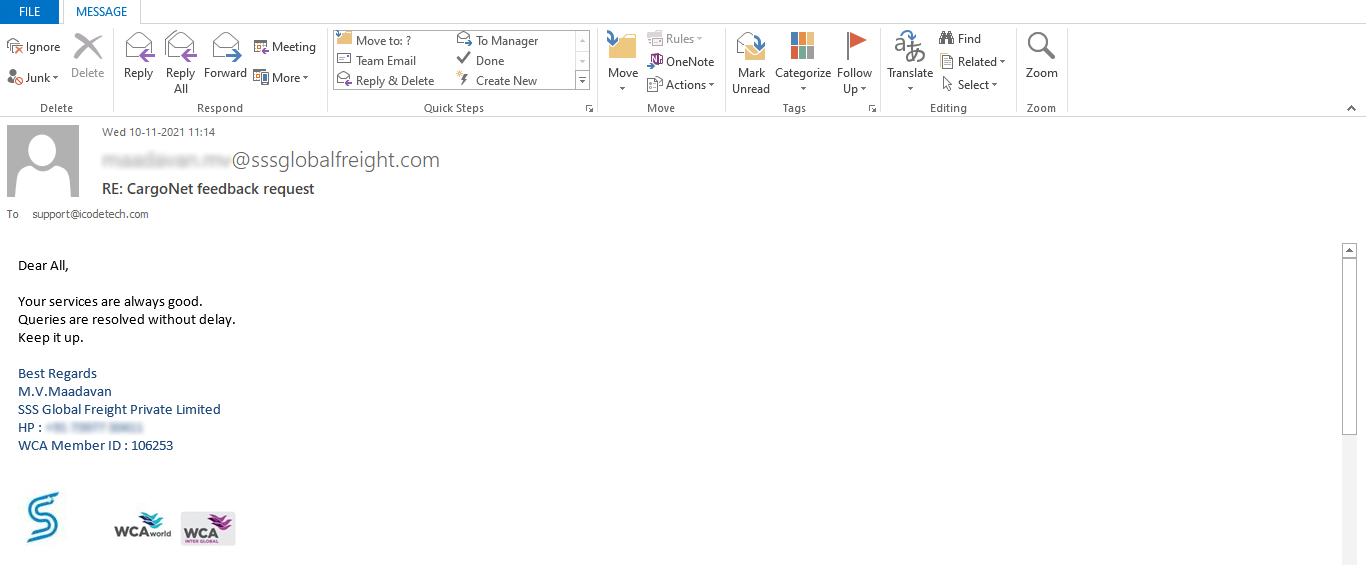
The transportation and logistics role is frequently underrated and underappreciated in the business. Logistics encompasses not just the storing and delivery of items, but also the successful administration of inventories, human transportation, and crucial customer relationship management.
The logistics ERP solution aids in the management of all logistics activities within a company. It has a set of guidelines that define how the system should operate. A logistics process model is the name given to the set of regulations. A logistics ERP system usually consists of a number of interrelated components. These modules handle a variety of logistics tasks.
A solid logistics solution can accomplish a lot. It can automate billing, allow warehouse personnel to monitor inventory in real time, optimise delivery routes, and assist with delivery planning. It can also provide you with access to current and historical sales and inventory data, allowing you to make more informed business decisions.
In general, logistic organisations manage their supply chains using a range of IT platforms. Though these systems are effective, they frequently lack the insight, flexibility, and integration that a logistics company needs to operate its supply chain operations effectively.
The logistics ERP solution aids in the management of all logistics activities within a company. It has a set of guidelines that define how the system should operate. A logistics process model is the name given to the set of regulations. A logistics ERP system usually consists of a number of interrelated components. These modules handle a variety of logistics tasks.
.A good logistics solutions can do a lot of things. It can automate your billing, let your warehouse staff monitor your inventory in real time, optimize your delivery routes, and help you plan your deliveries. It can also give you access to your current, and past, sales and inventory data so that you can make better business decisions.
In general, logistic companies use a variety of IT systems to manage their supply chain. Though these systems are efficient, they often lack the visibility, flexibility, and integration necessary for a logistics company to manage their supply chain operations efficiency.
So, what are you waiting for? Invest in a CargoNet logistics ERP system, and reap all these benefits
Yes! The Reports can export to PDF format, Excel, Word Format etc.
Yes! B/L print outs can be taken in a Single click
Freight forwarders provide their customers with a range of services including consolidation, documentation, freight payment and customs clearance. The service is offered by freight forwarders who serve as an intermediary between the shipper and the forwarder’s transportation network.
The world is calling, but the struggle with complex international exports can be overwhelming. Shipping software allows you to:
Optimize systems: Automate operations, expand productivity, and increase accuracy.
To achieve global ordering: Track inventory in real time; compatibility with global networks; and make decisions based on data.
Enhanced customer service: Respond quickly, provide clear information, and rise above language issues.
Choose the right freight forwarding software to open your company to global growth.
Choosing the right freight software is like choosing your superhero gear – it empowers you to handle complex logistics and soar to new heights. Here are some basics to ensure your software is a real winner:
Effortless Shipping: Imagine recording, tracking and reporting on shipments with a few clicks. Your software may simplify these processes, freeing you up to focus on bigger things.
Simplified bookkeeping: Creating accurate quotes, invoices, and report cards is unlike paper invoices. Look for software that simplifies paperwork and keeps everything organized.
Strong customer relationships: A robust CRM system in your software allows you to manage customer interactions, send personalized communications, and foster strong relationships – the foundation of any successful business.
Data push decisions: Your software program can be your own record analyzer. Look for features that provide insightful analysis of overall performance, identify trends, and empower your company to make informed choices.
Easy conversation: Does your software play well with others? Integrating accounting, CRM and visit management systems improves information flow and eliminates accounting silos – a huge win for efficiency
By installing those essential components, you equip your logistics with the software muscle needed to overcome any system challenges and achieve breakthrough success
A quantity of steps are worried in integrating and employing freight forwarding software program (CargoNet) inside your commercial enterprise, these encompass:
Evaluation and Planning: Assess the existing freight forwarding processes in your organisation and discover regions to be stepped forward. Establish your precise requirements and dreams for imposing CargoNet software program application. Develop a plan of implementation along with timeframes, sources and key individuals.
Customization and Configuration: Collaborate with our implementation group in order to personalize the software program in line with the workflows or processes used by your very own organization. Set up configurations, user privileges, in addition to connections to other systems employed across your business enterprise.
Data Migration: Prepare your present day Freight Forwarding statistics for migration into CargoNet. Make certain that statistics is accurate and sound by way of purging it off old data even as formatting it efficaciously












Share your information for instant access :